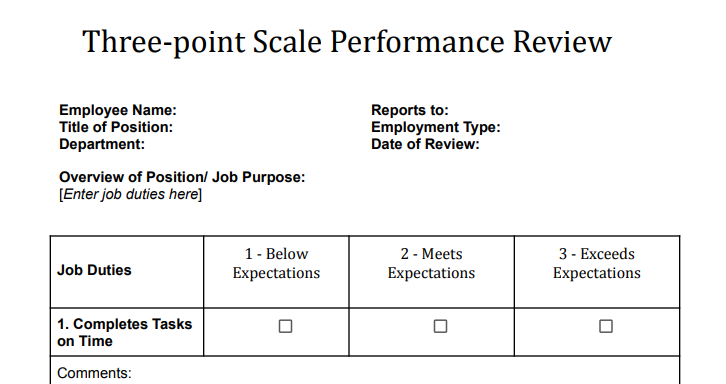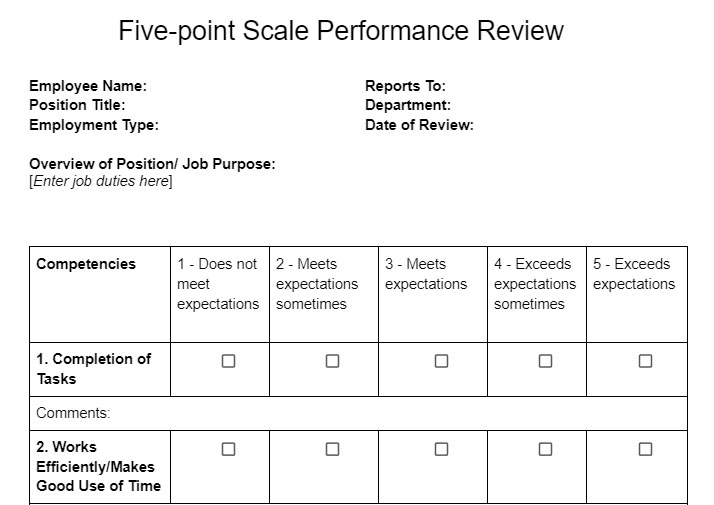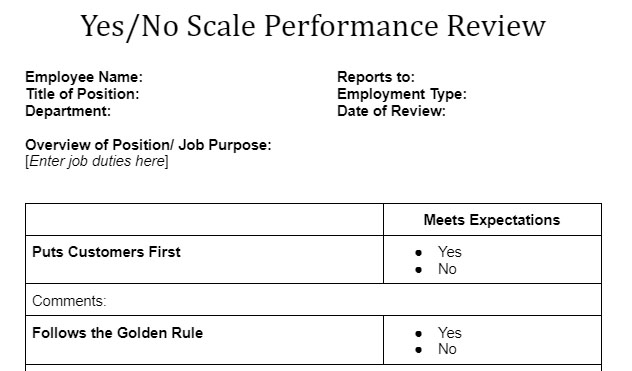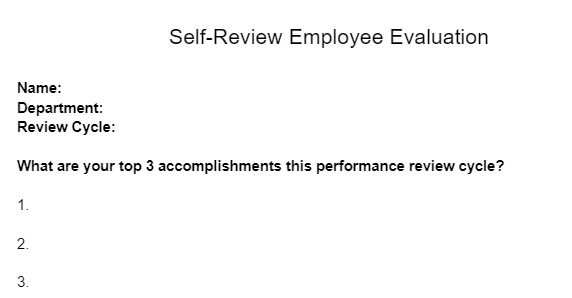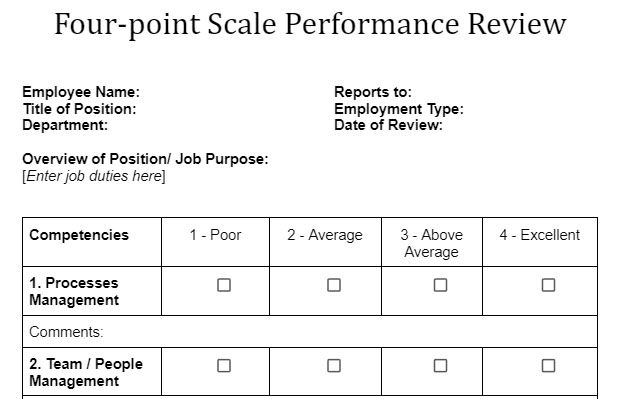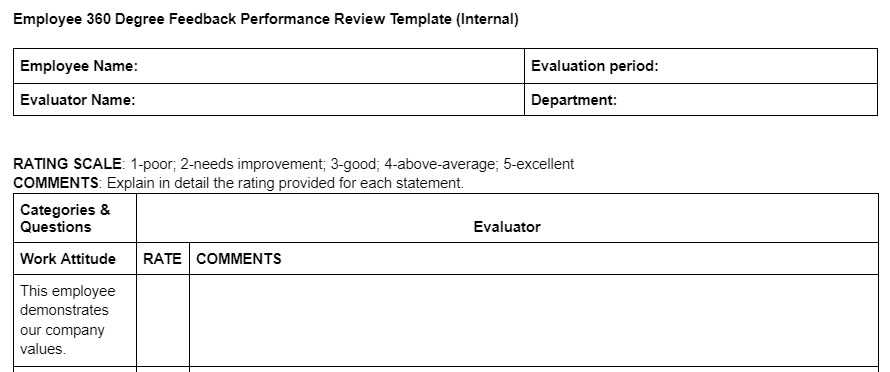Employee evaluation forms are documents that give structure to your employee management and feedback process. These may be used regularly for annual performance reviews or as needed for performance improvement.
Having a well-structured performance review template is important to ensure that you hit all necessary points for improvement while avoiding any issues of discrimination. Besides that, it allows you to record the conversation a supervisor has with their employee regarding performance.
To help you out, we’ve created downloadable employee performance evaluation forms that you can customize and use for your hourly workers, salaried workers, managers, and executives.
Downloadable Employee Evaluation Forms
You may use slightly different templates depending on the specific role or type of employee, from a simple employee review form to a more advanced performance evaluation template. Click through the tabs below for free downloadable templates for hourly workers, salaried workers, managers, and executives.
Key Sections to Include in a Performance Review Template
When deciding what items should be on your performance evaluation form, ask the following questions:
- Who is performing the review? Depending on the relationship between the employee and evaluator, different questions or attributes may be measured. Some options for evaluators include managers, subordinates, and peers.
- What skills are you evaluating? Your company may be interested in a straight evaluation of goals or a broader evaluation of values or competencies. What you are evaluating will determine much of the content in your form.
- What kind of rating skills do you want to use? Many companies use a number system to quickly compute overall ratings. Common scales are three-point and five-point ratings, but other ratings, such as yes or no, are used as well.
Some key areas should be covered on all performance review forms. These include:
What to Avoid When Filling Out Employee Review Forms
When conducting employee reviews and filling out the performance evaluation template, there are a few things you should avoid.
Avoid | Instead |
|---|---|
Only giving negative feedback | Give the employee both positive feedback and areas to improve. |
Not elaborating on your score | Be sure to leave comments after each rating that back up your decision. |
Overrating an employee as a motivational tool | Be honest in your evaluation of the employee’s performance, and if motivation is an issue, make suggestions for improvement. |
Not following up | Make sure you circle back with the employee on any improvements listed on the review form. |
You also want to avoid bias when filling out the employee review forms. Make sure your answers are based on performance only and not how you feel about the employee as a person. When bias creeps into any part of the employee process (from hiring to evaluations), your company can be vulnerable to legal issues.
Employee Evaluation Forms Frequently Asked Questions (FAQs)
One of the most important reasons to use a performance review template is to avoid legal hazards. When you use an objective template, you’re more likely to avoid discrimination and rating employees differently for subjective reasons. Templates also help you back up your review with evidence, further reducing the chances of a discrimination charge.
Absolutely. As your performance review process changes, you add more employees in different roles, and the culture of your company changes, you’ll need to update your performance template for employees. Set a reminder to at least check in on them annually.
Write as much as is necessary and nothing more. Make sure you convey enough information to the employees so they understand where you’re coming from and how they can improve. Also, be sure to avoid any subjective or derogatory comments. While you’ll have a discussion with the employee, they may go back and look over their review multiple times. Make sure it’s something that leaves them with positive reinforcement.
It depends on many factors. Is your business fully remote? Are you a very small team? Do employees often interact with one another? Here are some common types of reviews and a brief description of each:
- 360: This review is often the most comprehensive and best used when your employees routinely work together. For each review, you’ll pick about three colleagues to provide some insight and answer a few questions about the employee you’re reviewing. Then, take those comments and either use them directly as part of the peer feedback or make them more anonymous and integrate them into your review.
- Objective: This more modern review approach evaluates employees based on joint objectives determined during the last review cycle. You’re only looking at the major objectives for the employee—things like completing the rollout of a new product or having fewer than five customer complaints per week. This type of review isn’t always recommended, as it focuses only on big-picture items and not day-to-day work.
- Graded: Most of our templates follow this. It’s best used when you can grade an employee on objective criteria. You must train reviewers on how you expect your grading system to work. Some companies want all employees to have five points, while others consider three as the median.
Then it’s time to update your processes. Employees need guidance; one way they get that is through regular performance reviews. If you’re not giving employees feedback, they don’t know if they’re doing a good job and will seek other options.
Bottom Line
Employee evaluations can be an integral part of employee management and a company’s overall success, as they help tie an employee’s performance to the company’s success. Using employee evaluation form samples or performance review templates makes tracking company goals and employee performance over time easier.


